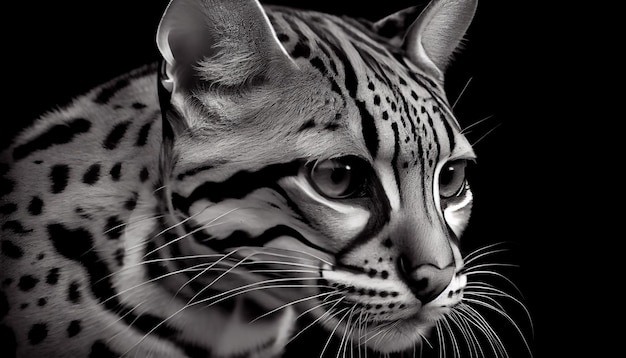Fascinating Facts about Black Panthers

Black panthers are not a distinct species, but rather melanistic variants of leopards or jaguars.
Melanism is a genetic condition that causes excessive production of dark pigment in the skin, fur, or feathers of an animal.
The black coat of black panthers helps them blend into their surroundings, making them excellent stealth hunters.
Black panthers are native to Africa, Asia, and the Americas, and can be found in a variety of habitats, including rainforests, swamps, and grasslands.
Black panthers have incredibly keen night vision, which allows them to navigate and hunt effectively in low-light conditions.
Despite their name, black panthers are not closely related to the true panthers, which refer to large cats like lions, tigers, and jaguars.
Black panthers are powerful and agile climbers, often seen resting or hunting from treetops.
These elusive creatures are solitary by nature and only come together for mating purposes.
The scientific name for the leopard is Panthera pardus, and the melanistic variant is often called the black leopard.
Black panthers have adapted to a wide range of prey, including small mammals, birds, reptiles, and even larger ungulates like deer.
One distinctive feature of black panthers is their incredibly strong jaws, which allow them to deliver powerful bites to immobilize their prey.
Black panthers possess excellent hearing, which helps them locate prey in dense vegetation or pitch-black darkness.
Fascinating Facts about Black Panthers part 2
Panthers are known for their remarkable ability to silently sneak up on their prey, thanks to their soft padded paws.
The United States has a football team named the Carolina Panthers that derived its name from the black panther.
Black panthers are not aggressive towards humans unless provoked or threatened.
The unique melanistic appearance of black panthers has led to their depiction in various mythologies and folklores across different cultures.
Black panthers hold a place of reverence in many indigenous cultures, symbolizing strength, agility, and stealth.
The black coloration of the panther’s fur absorbs heat better than lighter shades, helping them stay warm in cooler climates.
Despite their powerful hunting capabilities, black panthers generally have a success rate of around 50% during hunts.
Panthers are primarily nocturnal animals, preferring to rest during the day and hunt during the night.
Female black panthers are generally smaller in size compared to their male counterparts.
Black panthers communicate through a range of vocalizations, including roars, growls, screams, and hisses.
Black panthers have a lifespan of around 12 to 15 years in the wild, although they can live longer in captivity.
The pattern of rosettes (spots) on the fur of black panthers is still visible when their coats are examined closely.
The discovery of a black panther in an area can often indicate a healthy ecosystem with abundant prey resources.
Black panthers have a strong ability to adapt, which is why they can thrive in various environments, from dense forests to semi-arid grasslands.
Due to deforestation, hunting, and habitat destruction, black panthers are considered vulnerable, with declining populations in many regions.
In some cultures, black panthers are believed to possess magical or spiritual powers, and their body parts are used in traditional medicines.
The speed and agility of black panthers enable them to make incredible leaps of around 15 to 20 feet horizontally and 10 to 12 feet vertically.
Black panthers are strong swimmers and can easily navigate across rivers and lakes.
In most cases, the black coloration of panthers serves as a successful camouflage during nighttime hunting.
The iconic superhero Black Panther from Marvel Comics was inspired by the grace, strength, and agility of black panthers.
Black panthers have flexible spines that allow them to twist and turn while chasing prey.
These majestic cats are known for their fierce territoriality, marking their territories using scent markings and claw scratches.
The mating season for black panthers varies depending on their geographic location.
Black panthers often drag their prey to a secluded spot before consuming it to protect it from other scavengers.
The powerful hind legs of black panthers give them the ability to pounce on prey with incredible force and precision.
Despite their large size, black panthers are excellent climbers, often seen resting on the highest branches of a tree.
Black panthers generally live a solitary lifestyle, marking their territories and avoiding encounters with other panthers except during mating.
Melanistic variants are extremely rare in the wild, and it is estimated that only 6% of leopard populations are black.
The black panther’s coat color is not just restricted to their fur, but also extends to their whiskers, giving them a completely black appearance.
Black panthers are highly adaptable and have the ability to survive in various climatic regions, from humid rainforests to dry grasslands.
The diet of black panthers mainly consists of meat, providing them with a rich source of protein and energy.
Unlike other big cats, black panthers are not known to roar, but they can emit a range of other vocalizations to communicate.
The incredible strength and agility of black panthers make them formidable hunters, capable of taking down much larger prey with ease.